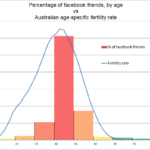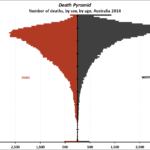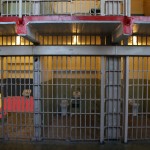Funding a safety net for private education

Private education allows parents to segregate their offspring based on various socio-economic boundaries. It limits kids’ socialisation across the wider community, and diminishes awareness of how others live. I don’t believe private schools help create a better society, and it should cease to be a legitimate option.
However, while parents are allowed to send their kids to private schools, it is the government’s responsibility to ensure these are adequately funded to provide a standard level of education.
I usually sit on the anti-paternalistic side of the fence, but I also don’t believe children should suffer due to their parents’ bad decisions. So, much like enforcing vaccination, I think the Government should support private schools to provide decent education.
It may surprise many to know that Australian private schools have less money per student than Government schools ($15,500¹ vs $16,177 in 2012-13²).
While funding for Government schools is relatively evenly spread³, private school funding ranges widely depending on the school and its community.
When picturing private schools, many imagine the top echelons of elitism. Pompously dressed kids hopscotching their way to Scotch College, Xavier or Sydney/Geelong/Brisbane Grammar. These do possess much higher budgets than public schools, and should potentially lose all subsidies. But for every Scotch kid sipping their single-origin soy-latte for morning-tea there are numerous Penola Catholic College and St Bishoy Coptic Orthodox College students boiling their International Roast. These less famous private schools make up the majority of the private student population.
In 2012-134, the average private contribution to non-government schools was $6,574 per student. Unfortunately, the MySchool website does not facilitate broad research as not all information is easily available in one dataset5 (figures have to be searched one school at a time), so studies on this is difficult. However, by cherry picking some obvious cases, private contributions (fees, charges, parental contributions and other private sources) range from $1.5k to $37.3k (Our Lady of the Sacred Heart Thamarrurr Catholic College NT and Sydney Grammar School being the examples). Seeing as the average is just under $7k, there must be way more schools like Thamarrurr’s than Grammar schools (in funding terms). Without government funding, the majority of private schools would have less than half the $ per student that state schools have.

While the likelihood of attending a private school increases with socio-economic standing, 22% of students from the lowest socio-economic decile attended a private school based on 2011 Census data. And over a third of “middle class” students (deciles 4 to 7) attended these schools too6.
While attending private schooling is a choice, it’s usually (I assume, don’t have the figures here) a choice made by the parents, not the kids. Kids whose parents make bad decisions probably already suffer enough through other means. At least their schools should be adequately funded.
Private school fees can be exorbitant, but most people aren’t aware of the amounts spent on public education, so the fees we hear about are hard to contextualise or compare.
In 2013-14 Australian Governments provided $16,177 per student to public schools. This funding was also topped up by parental contributions and other private sources. While fees and extra funding in public schools may not be as much as private school fees on average, they can amount to considerable figures. One example found by searching in wealthy areas is that of Auburn State High School, in the Western Suburbs of Melbourne7, which accumulated over $4,000 per student from private sources.
{As an aside, the examples above show how public schools in wealthy areas (e.g. Auburn) have greater private funding (on top of greater government funding) than some private schools (e.g. Thamarrurr in the NT).}
By sending their kids to private schools, parents default on ‘full government assistance’. Government contributions to private schools bring the average funding up to almost public school levels. The current federal government funding model for private schools takes into account the socio-economic situation of the students’ families. Schools with high socio-economic students receive as little as 30% of a “full government funded student”, and schools with low socio-economic student receive as much as 70%. It could be argued that the current funding model is not targeted enough. Rich schools should receive 0%, and poor ones closer to 100%.
Having said all that, this is trying to deal with a sub-optimal situation. Better still would be to remove the possibility of kids attending such establishments, and ensuring all students get the education they need, without segregation by religion, social standing, or any other way in which you want to cut society.
[1] Derived from https://www.aisnsw.edu.au/Publications/Other/Documents/ISCA%20Snapshot%202015.pdf & http://www.ncec.catholic.edu.au/resources/publications/353-2013-annual-report/file
[2] Latest comparisons freely available.
[3] Funding for schools differs according to the needs of the students attending, but the range is a lot smaller than private school funding.[4] Latest freely available.
[5] Despite Federal Government having a policy of “open data by default”.
[6] This analysis uses the SEIFA Index of Relative Socio-economic Advantage and Disadvantage (IRSAD).
[6] This might be the topic for another post.

















Trackbacks/Pingbacks